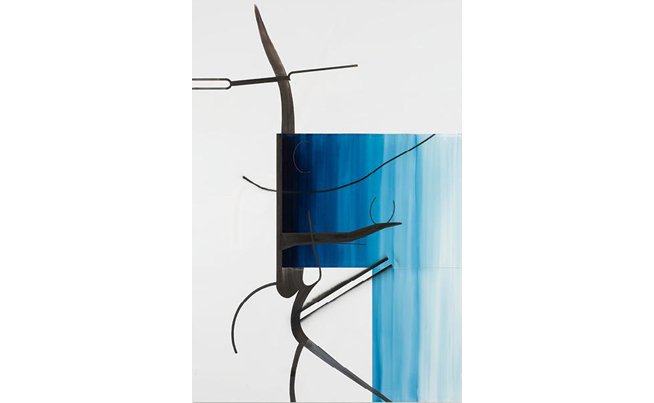
Albert Oehlen: Woods near Oehle reviewed in Artforum
March 12, 2017
CLEVELAND – Since the 1980s, Albert Oehlen has routinely deployed the tree as a programmatic conceit, a rudimentary scheme that has allowed for mischievous invention within the language of painting.
As a rhizomatic figure, the tree offers vast and circuitous navigation potential. It possesses a core (trunk), diverging pathways (branches), and an infinite number of regenerating underground conduits (roots), and thus it is an ideal trope for routing and re-routing painting’s histories and influences. It is not surprising that the artist insists on using the anatomy of a plant over purely abstract and inorganic conceptions of networks to stretch, grow, and poke at painting and its potentiality. After all, the tree is a traditional and lauded vertical fixture within the genre of landscape painting.
The splintering of figuration and abstraction in this exhibition extends well beyond pictorial inventions within individual paintings. Here, the artist, along with a team of friends and arts professionals, choose to punctuate a selection of his work from the past forty years with pieces by other artists. Formal alliances are made by juxtaposing Oehlen’s painting Strassen, 1988, with two late de Kooning abstractions: Untitled XIII, 1985, and an untitled work from 1987. Three of Rodney Graham’s photographs of inverted trees make an appearance, as do pieces by Jackson Mac Low and Harun Farocki. A collaboration between Oehlen and the composer Michael Wertmüller yields a new musical score that accompanies a strobe-light projection installed at the exhibition’s entrance. Yet it is a suite of seven large black-and-white etchings (all Untitled, 2016)—each print hosting a fantastical image of a woody aberration and a hefty amount of lavish plate tone––that best demonstrates the utter abundance of pictorial invention that Oehlen has been able to achieve from pondering the tree.
For full article, visit Artforum.
